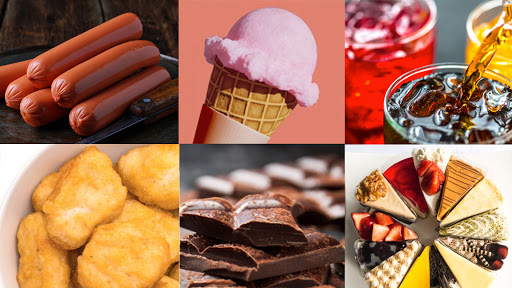A. Characteristics of the food industry
1. The process of food manufacturing includes washing, cooking, concentration, sterilization, and moisture storage. The process is repeated for heating and cooling operations, water needs to be added for dilution and heating for concentration. During the storage and processing of raw materials, in order to prevent quality deterioration
Need to cool. In the circulation process, there is not only normal temperature circulation, but also low temperature circulation. Heating energy and water use are indispensable resources.
2. Food is made up of organic matter. Since animals and plants are processed, it is undesirable to store them naturally during storage and circulation. In most cases, cooling is required.
B. Overview of heating
The main processes using steam are cooking, drying, roasting, sterilization, washing, concentration, refining, and others include dissolution, mixing, and waste treatment.
The food heating methods are classified as follows:
1. The steam is directly sent to the heating device, that is, the heating device where the steam and the raw materials are in direct contact, such as the cooking of fermentation (alcohol, brewing) raw materials. Soybean continuous cooking tank is a typical direct contact heating device.
2. The indirect water vapor heating device refers to a heat exchanger heating device, such as a plate heat exchanger used in the process of concentration and sterilization of milk and juice.
3. Direct steam cooking and soup cooking device.
4. Fire roasting device directly.
5. Electric heating device.
C. Application in sugar manufacturing process
1. Outline of the sugar manufacturing process Dissolve the input raw sugar, and remove impurities through carbonation, filtration, activated carbon adsorption tower, ion exchange resin, etc. to make a decolorized colorless and transparent refined sugar solution. After concentrating the sugar liquid in a thick knitting tank, it is sent to a vacuum crystallization tank to be boiled and dried, and then recrys
D. Thermal sterilization technology
The method of using heat to kill harmful microorganisms in food is both an ancient method and an extremely important sterilization technique in modern times. In 1804, French Appert invented a method of storing food in boiling water for a period of time, which can store food for a long time. In the 1850s, the French Pasteur clarified the microbial spoilage mechanism of food, laying a theoretical foundation for the development of sterilization technology. Food heat sterilization can be divided into three types: low temperature sterilization, high temperature short-term sterilization and ultra-high temperature instant sterilization.
1. Low temperature sterilization is also called pasteurization. The premise of sterilization is 61 degrees Celsius to 63 degrees Celsius / 30 minutes, or 72 degrees Celsius to 75 degrees Celsius / 15 minutes to 20 minutes. The pasteurization technique is to fill and seal the food in the packaging container, and maintain the temperature below 100 degrees Celsius for a certain period of time to kill the bacteria in the packaging container. Pasteurization can kill most pathogenic bacteria, but the ability to kill non-pathogenic spoilage bacteria and their spores is insufficient. If pasteurization is combined with other storage methods, such as refrigeration, freezing, deoxygenation, Packing can meet the requirements of a certain retention period. The pasteurization technology mainly uses the sterilization of citrus and apple juice beverages. Since the pH value of the juice food is below 4.5, there is no microorganism growth. The objects of sterilization are yeast, mold and lactobacilli. In addition, pasteurization is also used for the sterilization of jams, canned fruit in syrup, beer, canned pickled vegetables, pickles, etc. Pasteurization has reliable acid resistance for sealed acid foods. For low acid foods that are not resistant to high humidity treatment, as long as it does not affect consumption habits, the pH value is often used to add acid or by means of microbial fermentation to make the pH value Reduced to the range of acidic food, low temperature sterilization can be used to achieve the purpose of preserving food quality and storage resistance. This method takes a long time and should not be used for heat-sensitive food.
2. High temperature short-term sterilization (HTST): The premise of sterilization is 85 degrees Celsius to 90 degrees Celsius / 3 minutes to 5 minutes, or 95 degrees Celsius / 12 minutes, mainly used for low-temperature smooth and smooth sterile milk and low-acid fruit juice beverages For sterilization, the heat exchanger can be used to heat the liquid material to nearly 100 degrees Celsius in an instant, and then quickly cooled to room temperature. This method takes less time and has a better effect, which is conducive to product quality. It can mainly kill yeast, mold, lactic acid bacteria and so on. These two methods have the characteristics of non-disruptive sterilization, simple operation, small equipment investment, and long application history. They are also widely used in the sterilization of various canned foods, beverages, alcohol, medicines, and dairy products.
3. Ultra-high temperature instant sterilization (UHT): It came out in 1949 with the emergence of Stork devices. Since then, many types of ultra-high temperature sterilization devices have appeared internationally. Ultra-high temperature short-term sterilization is to heat food to a high temperature (above 130 degrees Celsius) in an instant to achieve the purpose of sterilization, which can be divided into direct heating and indirect heating. The direct heating method uses high-pressure steam to directly spray the food to make the food heat up at the fastest speed, reaching 140 degrees Celsius to 160 degrees Celsius in a few seconds, maintaining for a few seconds, then removing moisture in the vacuum chamber, and then cooling to a sterile cooler to Room temperature. Indirect heating method is based on the viscosity and particle size of food, choose plate heat exchanger, tube heat exchanger, scraper heat exchanger.
Plate heat exchanger
Suitable for liquid foods with pulp content not exceeding 1% ~ 3%. The tube heat exchanger has a wide range of adaptation to products, and can process concentrated fruit and vegetable juice and other liquid foods with high pulp content. Tube heat exchangers can be used where plate heat exchangers can cause coking or obstruction, and the viscosity is not sufficient to use scraped plate heat exchangers. The scraper-type heat exchanger is equipped with a rotator with blades, which scrapes on the heating surface to push high-viscosity food forward to achieve the purpose of heating and sterilization. The effect of ultra-high temperature instantaneous sterilization is very good, almost meets or close to the requirements of complete sterilization, and the sterilization time is short, the damage of nutrients in the material is little, the quality of food is almost unchanged, and the retention rate of nutrients is more than 92%. The efficiency is very high, and the effect is better than the other two heat sterilization methods. The ultra-high temperature sterilization device with the food aseptic packaging technology has developed rapidly at home and abroad, and has now developed into a high-tech food sterilization technology. At present, this sterilization technology has been widely used in the sterilization of milk, soy milk, wine, fruit juice and various beverages. It can also be sterilized by immersing the food in hot water at this temperature.
For the steps of repeated heating, cooling, separation, sterilization, ultra high temperature sterilization, heat recovery in the process of food and beverage.

